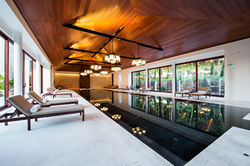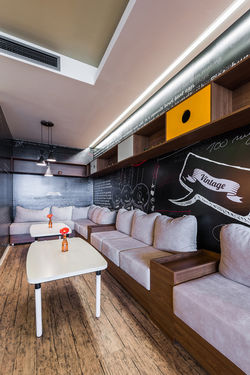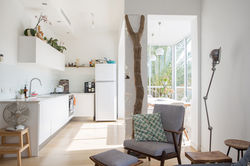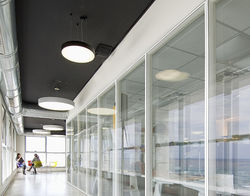The Ritz-Carlton in Kyoto, Japan, with lighting design by WORKTECHT Corporation, took home an IALD Award of Merit, accepted in person by Yoshihide Kurose, Associate IALD and Atsushi Kaneda, IALD.
The Ritz-Carlton in Kyoto, Japan, with lighting design by WORKTECHT Corporation, took home an IALD Award of Merit, accepted in person by Yoshihide Kurose, Associate IALD and Atsushi Kaneda, IALD. Kyoto, an international tourist city defined by its beauty, history and tradition, has its own lighting culture. The lighting design of the new Ritz-Carlton Kyoto, provided by WORKTECHT, was conceived as “the common light,” in response to the city’s sustainable beauties. In the atrium, the main staircase is inspired by origami. The lighting expressed the beauty of the shadow of the lattice and kept the illuminance at the same time by lighting up the lattices one by one. Just inside the main entrance, a wall featuring a traditional Japanese pattern, “seven treasures,” gives guests a dramatic surprise upon arriving. The building façade features rectilinear and simple shapes, providing a tense but dignified atmosphere. The color temperature is chosen to evoke candelight; each window is meant to remind guests of traditional Japanese oil lamps. To express the Japanese beauty of neatness and concision, the lighting sources are indirect wherever possible. The result is elegant spaces blending light and shadow. During daytime in the tea lounge, shadows appear when daylight bleeds in. At night, different shadows appear, brought out by indirect lighting built into each lattice above. The general concept for the hotel décor was “The Tale of Genji.” Glass art work in one part of the hotel forms a bamboo forest described in the story. Lighting designers chose a changeable color temperature, allowing guests to forget about the real time outside and become lost in the forest. In other parts of the hotel, integrated floor lights are used to create drama, or custom-designed LED wall washers create compelling shadows on sculptural wall art. “This is another Japanese project where the lighting is thoughtful and attuned to the culture and tradition of the locality,” another judge wrote. “The scheme realizes the main elements of the brief the client must have given: luxury and subdued elegance.”














































































































































































